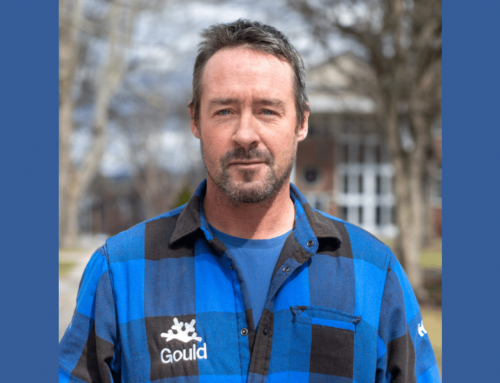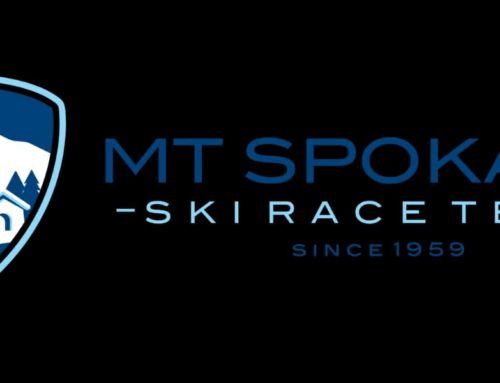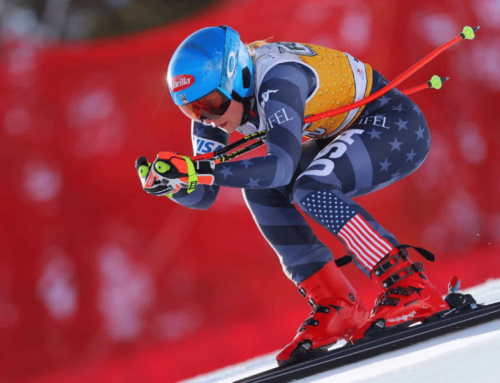Devo Dispatch: Men’s D Team Camp Focused on Volume and Versatility
The three words that could describe the theme of the mens project in Mt. Hood were volume, volume, and volume.
In total, the 45 development athletes skied over 5,000 turns a piece throughout the intensive week-long slalom focused training block headed up by the U.S. Ski Team’s head men’s development coach, Sasha Rearick.
Athletes between 2000-2005 birth years from clubs across the country skied six days of slalom and two days of giant slalom. Training focused on a diverse range of course sets and terrain environments designed to challenge them in ways they’d never experienced before.
“If you look at the history of really good slalom skiers from when they made their breakthroughs, they’ve skied sometimes upwards of 25,000 turns in their prep-period,” Rearick explained. “Our goal last year was to get to 20,000 and we did with the guys that did all of the projects with the men’s team. You need that kind of repetition, that kind of time on snow to see all different variables and variations and to ingrain it. It takes time. To get 5,000 turns in one camp, that’s a quarter of what some of those younger guys need and a fifth of the way to what the older guys need if they’re really going to make a breakthrough on the slalom side.”
That volume of training certainly paid off for Rearick’s group last season. The American men placed more skiers in the top 30 at the 2019 World Junior Championships in Val di Fassa, Italy, than any other nation. In fact, the US placed four athletes in the top 10, led by Vermonter Ben Ritchie’s silver medal performance.
“The best athletes in the world are extremely well balanced and very versatile,” Rearick said about his methodology. “They’re in a position on their skis where they can be adaptable to very different turn shapes. If we’re really balanced and have good fundamentals, we are adaptable.”
Running courses on their slalom skis that ranged from a minuscule 0.75 meters of distance to a whopping 18 meters, athletes also had to contest with rollers, spines, hops, and other obstacles, forcing them to maintain a well-balanced, athletic position if they hoped to finish each training run.
These courses weren’t necessarily designed to be “drills” in the traditional sense, but rather training tools that encourage the natural development of essential movement skills through an ultra-challenging race-like environment as opposed to slow, methodical movements on a moderate slope like most people practice fundamentals through more traditional ski drills.
“Instead of teaching in a way where you’re like, ‘here are the fundamentals, we’re going to do drills to keep your inside shoulder up.’ I believe that if you put athletes in an environment where they have to do that naturally, they’re going to learn and it’s going to be ingrained in their subconscious and their muscle memory much, much more for the long term,” Rearick explained.
“In general, the focus there was on skiing a lot of different types of courses with the goal of creating an environment where the athlete needs to adapt,” he continued. “That adaptation is a better-balanced athletic position. We were just trying to challenge the athletes in as many ways as we could in the time we had.”
In addition to fundamental skill development aided by unorthodox course setting, athletes were also introduced to more tactical training and taught how a more “aggressive” line isn’t always what they might think it is. Rearick said his work with development athletes last season led him to the epiphany that in general, athletes are better able to work on their fundamentals when they are running a more aggressive or “deep” line.
For many athletes and coaches, an aggressive line might be a straight one, but Rearick says that in actuality, most athletes start their turn far too early when trying to ski aggressively, resulting in sliding the top of the turn and lost opportunities to generate speed. Instead, Rearick and his coaching staff were teaching athletes that an “aggressive” line is actually one that begins slightly further down and outside, cutting back to the gate aggressively, as illustrated below:
“All athletes at this age need a lot of work,” admitted Rearick. “It doesn’t matter where you are in the world, you need to put the effort in to get better. We still have a lot of work to do but I was really pleased with the progress we made and especially the effort they showed to keep taking those challenges on.”
To put it simply, there is no reason why American technical skiing cannot be as good or have the depth of talent that some of the European powerhouse nations seem to enjoy year after year. At the junior level, things are trending in a positive direction but only time and results will tell if Rearick’s approach will pay dividends once this group of athletes reaches the elite ranks of the sport.
“At a camp like this where we get an opportunity to set a lot of turns and a lot of variability allows the athletes to one, get that volume, but also in many different situations which I feel is really important for their long-term development,” he said. “Are they necessarily faster at the end of this camp? No. But are they going to be better balanced for their next camps? I believe so.”





















